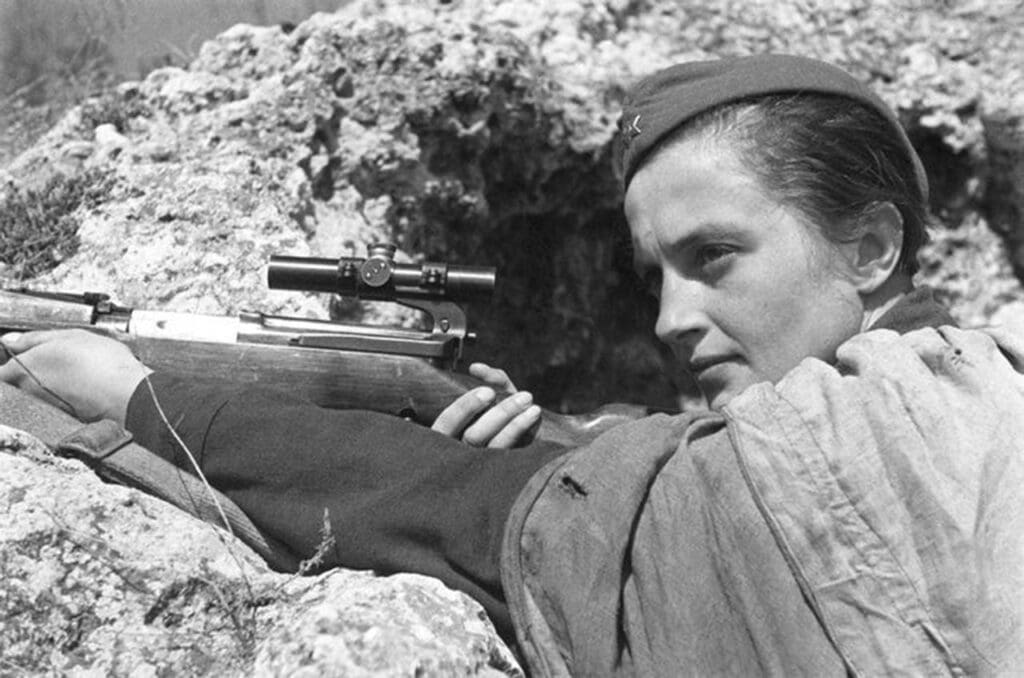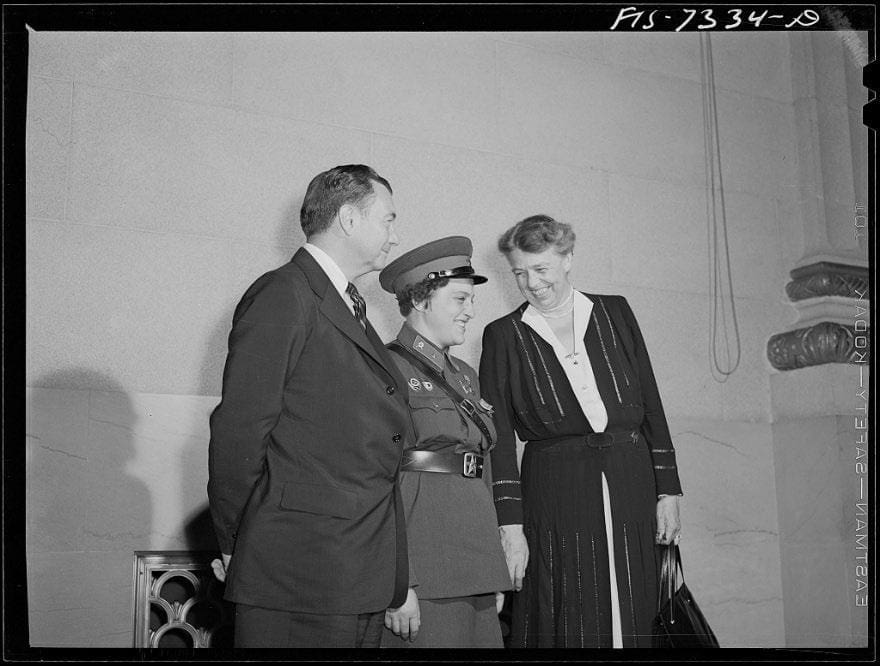Lyudmila Pavlichenko – The Most Feared Woman in World War II
Tags:
By Heidi Lyn Rao

Lyudmila Pavlichenko – The Most Feared Woman in World War II
Lyudmila Pavlichenko, the most feared woman in World War II, was born on July 12, 1916, in Bila Tserkva of the Russian Empire in present day Ukraine. She was in her fourth year studying history at Kiev University when Adolph Hitler unleashed Operation Barbarossa on Russia in June 1941. This set off a chain of events that changed the life of Lyudmila Pavlichenko and secured her role in history. It is ironic that Lyudmila Pavlinchenko was destined to be an unknown teacher of history but ended up becoming a famous person of history!

When we think of war heroes, especially those brave soldiers that led us to victory over Nazi Germany and the Japanese Empire, we think of men. There are channels on cable television dedicated to the brave men that fought tyranny in both World Wars. This is a Western construct. Women were not allowed to be in combat roles. In fact, it was not until 2013 that women in the United States Armed Services were granted full combat status and able to engage in combat operation in every branch of service, special operations, and military units.
This was not the case in Eastern European Countries. Women were allowed to be as patriotic as men and defend their homeland in combat roles. There are many historic pictures of female soldiers in combat roles in the Russian, Ukrainians, and Finnish armies. Lyudmila
Pavlichenko stood out as one of the deadliest soldiers, not only of female soldiers, but also her male counterparts. German soldiers gave her the unique title as “Lady Death!”
Lyudmila Pavlichenko’s story begins in 1929 when she was 13 years old, and her parents moved to Kiev. A neighbor’s son was bragging about his marksmanship skills when she decided that she could do anything a boy could do, and better. She joined a local shooting club to prove she could shoot better than anyone. Pavlichenko soon became an amateur sharpshooter. When asked how she became such a good shot, she replied, “lots of practice.”
At around 16 years of age, Pavlichenko worked in an arms factory, married a doctor, and gave birth to a son. Her marriage soon failed, and she was left to support her son on her own. At age 21, she enrolled at the University of Kiev to study history where she joined the track team as a pole vaulter and sprinter. As if Pavlinchenko was not busy enough as a mother of a young son, student, and athlete, she enrolled in sniper school put on by the Russian Red Army.
When Adolph Hitler betrayed Josef Stalin and violated the “Non-Aggression Pact” between the two countries and the German Army invaded Russia, Lyudmila Pavlichenko stepped up. She enlisted in the Red Army and became one of 2,000 female snipers and one of only 500 who survived the war. Unfortunately, she was sent to war basically unarmed.
When Lyudmila Pavlichenko was sent to the front lines in August of 1941, she was only issued one grenade due to a weapons shortage. Not long after she was on the front, a fellow soldier who was mortally wounded, handed her an 1891 model, bolt-action Mosin Nagant rifle. Not long after she was given a rifle she shot two enemy soldiers at 440 yards, or a ¼ mile away. Pavlichenko described this as a “baptism of fire” and was officially recognized as a sniper.
Fighting in the Siege of Odessa, Pavlichenko was credited with 187 kills during the 2 ½ month battle. She was quickly promoted to Senior Sergeant and then to Lieutenant. Ultimately, Lyudmila Pavlichenko was credited with 309 kills, including the killing of 36 enemy snipers. She was living up to her title as “Lady Death.” Pavlichenko, when asked how she felt about her killing ability, answered, “We mowed down Hitlerites like ripe grain.”
The German High Command felt the only way to handle Lyudmila Pavlichenko was to bribe her and try to get her to switch sides. It is obvious that the Germans did not know how to negotiate or use the proper methods of bribery. They offered Pavlichenko chocolates and rank in the German Army. Yes, you read that right – chocolates! She was flattered that the German High Command noticed her ability as a sniper. Pavlichenko turned down their offer. After she turned them down, German High Command ordered that she was to be killed and cut into 309 pieces, the number of her confirmed kills.
In June of 1942 while fighting in Sevastopol, Lyudmilla Pavlichenko was hit in the face by shrapnel from a mortar shell. The Soviet High Command then had her evacuated by submarine. She recovered from her injuries and was sent to the United States to promote aid to Russia. She was eventually made into an instructor, training new recruits in sniping. Lyudmila Pavlichenko secured her place in history with 309 kills in just 12 months! Imagine how many kills she would have racked up if she made it to the end of the war in 1945.
When Lyudmila Pavlichenko went to the United States, she was the first Russian citizen to be welcomed to the White House by a U.S. president, Franklin D. Roosevelt. She was also invited by First Lady, Eleanor Roosevelt to go on a tour of the United States promoting the war effort and as an advocate for women’s rights.

While on tour, Pavlichenko was met with a disrespect by U.S. reporters she never experienced in her home country. The reporters referred to her as the “Girl Sniper,” commented about the fact that she did not wear makeup, and addressed her “lack of fashion.” When she had enough of the press’s disrespect, she made an official statement. “I wear my uniform with honor. It has the Order of Lenin on it. It has been covered with blood in battle.”
Lyudmila Pavlichenko died of a stroke on October 10, 1974. She is buried at the Novodevichy Cemetery in Moscow.
Lyudmila Pavlichenko was awarded the “Gold Star of the Hero of the Soviet Union” and was awarded the “Order of Lenin” twice. In 1974, the Soviet Union honored Pavlichenko by issuing a commemorative stamp on the 60th anniversary of her birth.
Lyudmila Pavlichenko was not only one of the most feared soldiers on the Eastern Front, but she was also an advocate for women’s rights. She saw how the West treated women compared to Eastern Europe’s attitude towards females. She understood the inequality of the West and pointed that out to the press while on tour with the First Lady, Eleanor Roosevelt. She looked at killing Nazis like her male counterparts. When asked about her time as a sniper, she stated, “The only feeling I have is the great satisfaction a hunter feels who has killed a beast of prey.”
